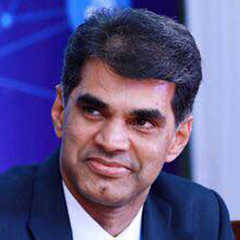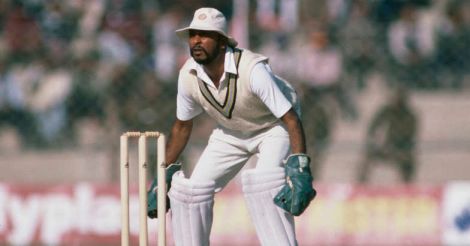Recently Ian Chappell, former Australian captain and one of the most respected commentators of the game, had written an article about the attributes that the top wicketkeepers possessed, which made them exceptional. Naming Rod Marsh, Ian Healy and Alan Knott as the best that he had seen behind the stumps, Chappell said “they were excellent glovesmen; they were thoughtful and could contribute ideas that would help the team to take wickets and they could bat”. Chappell went on to state that while runs from a wicketkeeper were welcome, they should not be at the cost of a dropped catch. Chappell also spoke against stumpers who kept up a continuous chatter behind the stumps, trying hard to make the batsmen lose their concentration and motivate the bowlers. “It is distracting”, he wrote!
Who would be the top wicketkeepers that India has produced and how would they rank based on the criteria prescribed by Chappell? From J G Navle, who kept wickets for India in the first-ever Test match that the country played in 1932, to Wriddhiman Saha, who is the glovesman in the national side in the longer duration version of the game presently, 38 stumpers have played for India in international cricket. Out of them, two - Rahul Dravid and Robin Uthappa - performed the task to lend better balance to the side in limited overs matches, while Vijay Manjrekar performed this task in the last test of the tour of West Indies in 1953 as both the wicketkeepers in the squad were indisposed. When the remaining stumpers are considered, it is seen that only seven have played either in more than 50 limited overs matches or 25 Tests or both. They are Farokh Engineer, Syed Kirmani, Kiran More, Nayan Mongia, Dravid, Mahendra Singh Dhoni and Saha.
When this group is considered, one would straightaway remove Dravid out of the reckoning as he was not a wicketkeeper, but was forced to don the gloves in One-Day Internationals for a brief time, in the interests of the side. Similarly Saha is only finding his feet in international cricket and it would not be fair to compare him with more experienced compatriots. More played 49 Test matches and 94 ODIs, but was nicknamed by his own teammates as “Fumbles”, on account of his tendency of not being able to gather the ball cleanly when Anil Kumble was bowling, which also led to many a dropped catch. Mongia was definitely better than More behind the stumps, but the fact that his colleagues lost confidence in him would render him ineligible for being considered. That leaves only Engineer, Kirmani and Dhoni as those who merit being considered as the top wicketkeepers who have played for India.
Engineer, who hailed from Bombay (present day Mumbai) made his debut in international cricket against England at Kanpur in the second Test of the 1961-62 series. During the initial part of his career, he faced stiff challenge for a place in the playing eleven from Budhi Kunderan, whom he had replaced. After a good debut series and a reasonably successful tour of West Indies, he was selected for the first Test against the touring England side in 1963-64. However, he fell sick before the start of the match and Kunderan, who was among the reserves was drafted into the eleven as the replacement. Kunderan grabbed the chance with both hands and scored a brilliant 192 in the first innings, which effectively secured his place in the squad. Engineer found himself out in the cold and could regain his place only when New Zealand toured India in 1965.
The game of musical chairs between Engineer and Kunderan continued till the last Test of the home series against the West Indies in 1966-67. Engineer opened the Indian innings and came close to scoring century before lunch against an attack comprising Wes Hall and Charlie Griffith, then the fastest bowlers in the world. The tour of England that followed saw the emergence of the spin quartet of B S Chandrasekhar, Bishan Singh Bedi, Erapalli Prasanna and S Venkataraghavan. Engineer’s superior wicketkeeping abilities lent an added edge to these spin bowlers and he thus cemented his place in the side. He retained this position till the first World Cup in 1975, after which he yielded his place to Kirmani.
Dashing player
Engineer was a flamboyant personality whose wicketkeeping tended to be flashy at times. He was prone to committing the occasional mistake, as happened when he missed a stumping Ian Redpath off Prasanna when Australia were down in the dumps at 24 for six in the Madras Test of 1970. However, he was very agile and possessed superb reflexes which helped him bring off some brilliant catches as well. His presence behind the stumps was one of the factors that contributed to improving the standard of close-in fielding and catching during the early 1970s and helped increase the effectiveness of the famed spin quartet.
Kirmani succeeded Engineer behind the stumps and had an uninterrupted tenure for a decade from 1976 onwards, except for the 1979 World Cup and tour of England that followed, when he was dropped for non-cricketing reasons. He hailed from Bangalore and cut his teeth keeping to Chandrasekhar, one of the most difficult bowlers to read, and Prasanna. This experience stood him in good stead when he was called for duties at the national level. No less a critic than Jack Fingleton hailed Kirmani as the best wicketkeeper in the world after seeing him keep wickets to Chandrasekhar in Australia in 1977-78. After the eclipse of the spin quartet and the rise of Kapil Dev, Kirmani showed his prowess in keeping wickets to pace bowlers as well. His agility behind the stumps was such that he would perform the role of a leg slip and pull off stunning catches diving full length to his left side. When he stumped Greame Wood off Dilip Doshi in the second innings of the Melbourne Test in 1981, Bill Lawry, who was in the commentators box, gushed that it was the best leg side stumping he had ever seen.
Smart operator
Kirmani was a quiet and efficient stumper who did not flaunt the skills of his trade. The few occasion when his performance fell below par during his international career were during the tours of West Indies, in 1976 and 1983. The hard wickets there helped the spinners get more bounce than normal and threw him off balance and as a result his work behind the stumps suffered. Other than this, there was scarcely a blemish from his side during his long career in international cricket, irrespective of whether the match was played at home or abroad and he was keeping to spinners or pacers.
Dhoni stands out as the most experienced among all wicketkeepers who have donned national colors, having played 90 Tests and 309 ODIs. His style of wicketkeeping is totally unorthodox, but highly effective and he is equally adept at handling both fast bowlers and spinners behind the stumps. His USP is his lightning reflexes and fast pair of hands, which makes him a very quick stumper. He has displayed extra ordinary cricketing sense and acumen as a wicketkeeper, which ensures that batsmen are loath to take any chances while using their feet or running between the wickets, as he pounces on the smallest of openings with the alacrity of a tiger. He has also shown himself to be extremely versatile, adjusting to the demands of all versions of the game with consummate ease.
Unflappable temperament
Dhoni has been sobriety personified behind the stumps. Though he drops the occasional catch and misses the odd stumping chance, he has developed the amazing ability to put them behind him immediately in his unique unflappable manner, that has become his hallmark. But on purely wicketkeeping abilities, Dhoni cannot be paced in the same league as Engineer and Kirmani.
When it comes to contributing ideas to the captain, Dhoni would stand head and shoulders over the other two by virtue of being one of the most successful captains in international cricket. He was the first of his tribe to successfully challenge the dictum that wicketkeepers would not make good captains as these two constitute independent, full time jobs demanding complete attention. Engineer led India for a session on the fourth day of the Calcutta Test of the 1972-73 series against England, when skipper Ajit Wadekar fell ill and was forced to leave the field. He came close to leading India in the second Test of the series against the West Indies in 1974-75, but at the last moment selectors chose Venkataraghavan to do the honors. Kirmani was deputy to Kapil Dev during the tour of West Indies in 1983, and led the side in a solitary ODI.
All three have contributed substantially with the bat, with centuries in Test matches under their belt. In this respect, Engineer has been more versatile, compared with the other two, as he could open the innings as well. Further, Engineer was an attacking batsman, who could change the course of a match with his daring stroke play. Both Kirmani and Dhoni would fall in the category of effective and utilitarian batsmen in Tests. However, in limited overs cricket Dhoni has earned the title of being the best finisher in the game, thanks to his ability to think straight and keep his cool under even the most stressful circumstances and penchant for big hitting, which worked to his advantage while batting in the end overs.
So the question emerges as to who one would select as wicketkeeper in an all-time great Indian eleven? My choice would be Dhoni for limited overs matches while for the longer version of the game I would go for Kirmani. Dhoni’s superior skills as a finisher would outweigh the occasional mistakes, if any, that might occur behind the stumps in limited overs matches. However, in Tests, where any lapse on the part of wicketkeeper could prove to be costly, it is essential that the best don the big gloves and here Kirmani’s superior skills would win him the vote. Engineer would figure as the first choice reserve stumper in both the squads - for his attacking batting skills, he would win the nod over Kirmani in shorter version of the game while his better work behind the stumps would place him ahead of Dhoni in the longer format.
(The author is a former international umpire and a senior bureaucrat)
Read more from Vantage Point: Come clean and wait patiently, Azhar tells Sreesanth

























 Syed Kirmani was a quiet and efficient stumper. File photo: Getty Images
Syed Kirmani was a quiet and efficient stumper. File photo: Getty Images
